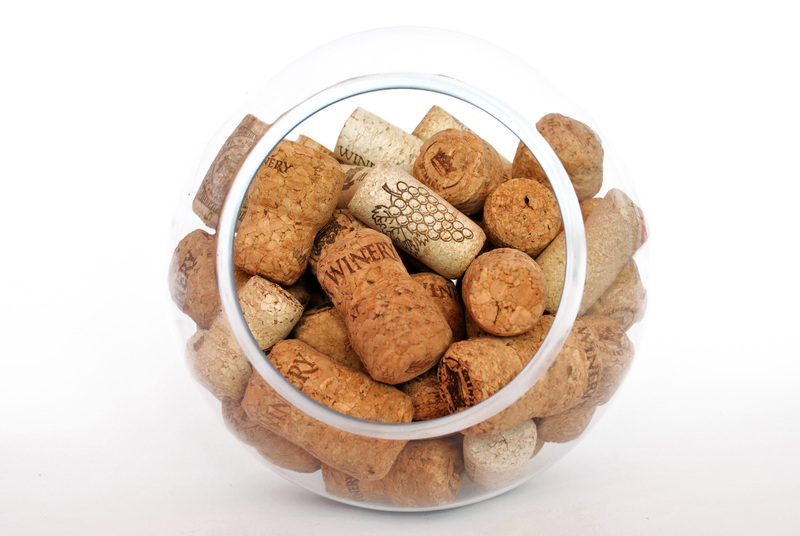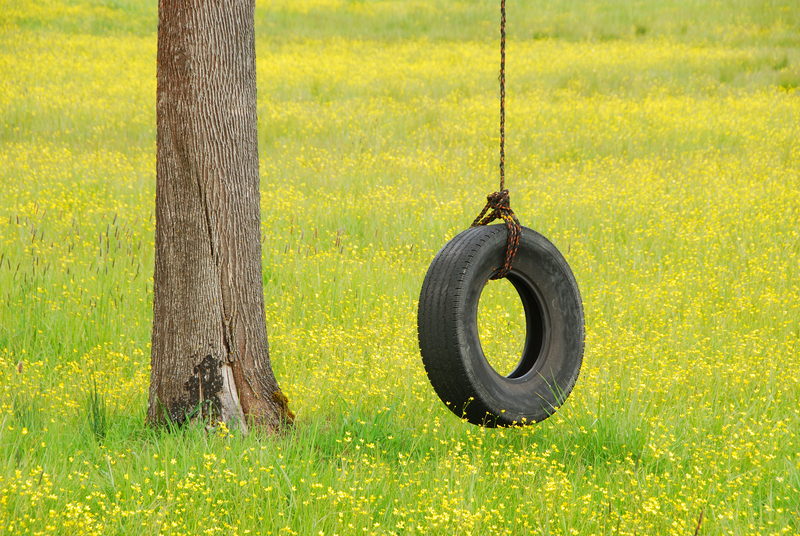Navigating Safe Plastic Choices: What to Dodge
Plastic is an omnipresent material in our day-to-day lives. Whether in packaging, kitchenware, children's toys, or even water bottles, its utility is undeniable. But with this convenience comes the crucial question: which plastics are safe, and which should be avoided? As awareness grows around the potential health and environmental hazards of certain plastics, it's increasingly important to know how to navigate safe plastic choices.

Understanding Plastic Safety: The Risks in Everyday Use
The term "plastic" comprises a vast array of materials, each with its unique chemical makeup and properties. Some plastics, such as those used in food containers or baby products, are under more scrutiny because of their potential to leach harmful chemicals. By learning what to dodge regarding unsafe plastics, you'll protect your health and contribute to a safer environment.
The Toxic Chemicals in Certain Plastics
Plastics are made from polymers and can include various additives that provide durability, flexibility, color, and more. However, some of these additives--such as BPA (Bisphenol A), phthalates, and styrene--have been linked to health concerns ranging from hormone disruption to cancer.
- BPA: A hormone-mimicking chemical found in many polycarbonate plastics and epoxy resins.
- Phthalates: Added to soften plastics, often found in packaging and toys.
- Styrene: Used to make polystyrene (Styrofoam), a suspected carcinogen.
To ensure safe plastic choices, it's essential to recognize which plastic products to dodge and how to identify safer alternatives.
Decoding Recycling Codes: Which Plastics to Dodge
Most plastic products feature a recycling symbol--a triangle with a number between 1 and 7. This resin identification code tells you what type of plastic you're handling. Here's a breakdown of the codes and what they mean for safe plastic usage:
- 1 - PET or PETE (Polyethylene Terephthalate): Common in water bottles and soda bottles. Considered relatively safe for single use, but can accumulate bacteria and degrade with repeated use.
- 2 - HDPE (High-Density Polyethylene): Widely regarded as one of the safest plastics, used in milk jugs and detergent bottles.
- 3 - PVC (Polyvinyl Chloride): Contains phthalates and other harmful chemicals. Frequently found in cling wrap, cooking oil bottles, and toys. Avoid when possible!
- 4 - LDPE (Low-Density Polyethylene): Used for bread bags and squeezable bottles. Generally considered safe but can release dangerous chemicals at high heat.
- 5 - PP (Polypropylene): Used in yogurt containers and straws. Regarded as safe for most food and drink uses.
- 6 - PS (Polystyrene): Known for Styrofoam. Leaches styrene, especially in hot foods or drinks. Best to avoid.
- 7 - Other (Including Polycarbonate, BPA, and LEXAN): May contain BPA and other risky additives. Common in reusable water bottles, baby bottles, food storage containers. Use only if labeled BPA-free.
Summary Table: Plastics to Dodge and Safer Alternatives
| Code | Name | Common Uses | Safety Notes | Recommendation |
|---|---|---|---|---|
| 1 | PETE or PET | Soda & water bottles | Single use, may leach after reuse | Limit reuse |
| 2 | HDPE | Milk, juice, detergents | Generally safe | Safe |
| 3 | PVC | Cling wrap, pipes | Phthalates, hormone disruptors | Avoid |
| 4 | LDPE | Bread, grocery bags | Safe, avoid high heat | Mostly safe |
| 5 | PP | Yogurt, straws | Safe | Safe |
| 6 | PS | Cups, takeout boxes | Leaches styrene | Avoid |
| 7 | Others | Water bottles, baby bottles | BPA risk unless stated BPA-free | Avoid if not labeled safe |
Highlighting the Main Risks: What Plastics to Avoid
1. PVC (Code #3): The "Poison Plastic"
PVC is notorious for its toxicity, releasing dangerous chemicals during production and when disposed of, including dioxins and phthalates. Exposure to these chemicals is linked to hormone disruption, reproductive issues, and even cancer. *PVC is best dodged wherever possible, especially for children's products, food containers, and anything heated.*
2. Polystyrene (Code #6): A Hidden Hazard
Found in cups, takeout containers, and disposable utensils, polystyrene leaches styrene when heated or in contact with oily foods. Studies have linked styrene exposure to neurological effects and cancer. For safe plastic choices, do not microwave or serve hot foods in polystyrene containers.
3. Polycarbonate and BPA-Containing Plastics (Code #7)
"Other" plastics can be a mixed bag, but many contain polycarbonate, which often features BPA. BPA is a well-known endocrine disruptor, particularly dangerous for infants, children, and pregnant women. Wherever possible, select products labeled "BPA-free" and avoid unlabeled "Other" plastics for food and drink storage.
Making Safe Plastic Choices: Tips for Everyday Life
It's not always possible to avoid plastics altogether, but you can make safer decisions by following these comprehensive strategies:
1. Check the Recycling Numbers
- Pick plastics with recycling codes 2 (HDPE), 4 (LDPE), and 5 (PP) for food and drink storage.
- Avoid codes 3 (PVC), 6 (PS), and 7 (Other, if not BPA-free).
2. Avoid Heating Plastics
- Heating enhances chemical leaching. Don't microwave food in plastic containers unless specifically marked as microwave-safe.
- Do not leave plastic water bottles in hot cars or direct sunlight.
3. Choose BPA-Free Products
- Look for clear labeling - especially important for baby bottles, water bottles, and food storage.
- Be wary of older plastic products, as BPA-ban is relatively recent in some countries.
4. Opt for Alternatives
- Switch to glass, stainless steel, or silicone for food and drink storage wherever viable.
- Reusable cloth bags make an excellent alternative to plastic bags.
5. Limit Single-Use Plastics
- Single-use bottles, utensils, and packaging contribute to both personal exposure and environmental pollution.
What Science Says: Health and Environmental Impact
Dozens of scientific studies confirm the dangers of unsafe plastics. The leaching of BPA and phthalates, especially at higher temperatures and with repeated use, has been linked to developmental issues, hormonal imbalances, diabetes, obesity, and even cancers. Their impact is especially concerning in children and pregnant women, making safe plastic navigation more crucial than ever.
Environmentally, plastics like PVC and polystyrene not only harm wildlife but also pollute waterways and soils for centuries. By making informed, eco-friendly choices, consumers can reduce their ecological footprint and support a sustainable future.
Frequently Asked Questions on Safe Plastic Choices
Q: Is microwaving food in plastic containers safe?
Unless marked as "microwave-safe," microwaving food in plastic containers can cause chemicals to leach into your food. Even some microwave-safe plastics can break down over time. For utmost safety, use glass or ceramic containers when heating food.
Q: Are all BPA-free plastics safe?
BPA-free does not guarantee a plastic is entirely safe. Some plastics may contain alternative chemicals with less-studied risks. _Whenever possible, choose plastics with safer recycling numbers (2, 4, 5) and limit overall plastic usage for food and beverages._
Q: Is it safe to reuse plastic water bottles?
PET (#1) bottles are designed for single use. Repeated use and washing can cause them to break down, increasing the risk of chemical leaching and bacterial build-up. Choose reusable bottles made from glass, stainless steel, or BPA-free plastics instead.
Q: How can I tell if a product contains BPA?
Always check for explicit labeling such as "BPA-free." If this is unclear, especially on older containers, or if the item is marked with recycling code 7 without a clear BPA-free label, it's best to err on the side of caution and avoid using it for food or drink.

Key Takeaways: Navigating Safe Plastic Choices
- Identify your plastics. Learn to read recycling codes and know which types are safer for food and beverage use.
- Steer clear of PVC (#3), polystyrene (#6), and polycarbonate or mixed (#7) plastics that are not labeled BPA-free.
- Choose alternatives like glass, stainless steel, or ceramics whenever possible.
- Avoid heating food in plastic containers, even those marked "microwave-safe."
- Minimize single-use plastic items for both health and environmental reasons.
- Stay updated on new studies and regulations regarding plastic safety, as the science is constantly evolving.
Conclusion: Making Informed Decisions for Healthier Living
Making safe plastic choices isn't about eliminating all plastics but about knowing what to dodge and why. With a clear understanding of plastic codes, knowledge of hazardous additives, and a commitment to safer habits, you empower yourself to protect your health and that of your loved ones. Don't let convenience compromise your well-being--choose plastics wisely, stay informed, and opt for safer alternatives wherever you can.
By embracing these practices, you'll not only navigate the market effectively but set a positive example for others in the journey towards a more sustainable, healthier future. Let's make conscious, safe plastic choices, for ourselves and generations to come.